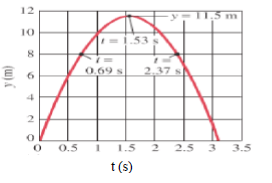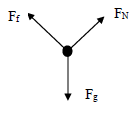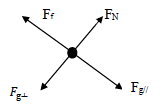PHYSICAL SCIENCES PAPER 1 GRADE 12 MEMORANDUM - PAST PAPERS 2017 JUNE
Share via Whatsapp Join our WhatsApp Group Join our Telegram GroupPHYSICAL SCIENCES PAPER1
NATIONAL SENIOR CERTIFICATE
MEMORANDUM
GRADE 12
JUNE 2017
GENERAL GUIDELINES
- CALCULATIONS
1.1 Marks will be awarded for: correct formula, correct substitution, correct answer with unit.
1.2 No marks will be awarded if an incorrect or inappropriate formula is used, even though there are many relevant symbols and applicable substitutions.
1.3 When an error is made during substitution into a correct formula, a mark will be awarded for the correct formula and for the correct substitutions, but no further marks will be given.
1.4 If no formula is given, but all substitutions are correct, a candidate will forfeit one mark.
1.5 No penalisation if zero substitutions are omitted in calculations where correct formula/principle is correctly given.
1.6 Mathematical manipulations and change of subject of appropriate formulae carry no marks, but if a candidate starts off with the correct formula and then changes the subject of the formula incorrectly, marks will be awarded for the formula and correct substitutions. The mark for the incorrect numerical answer is forfeited.
1.7 Marks are only awarded for a formula if a calculation has been attempted, i.e. substitutions have been made or a numerical answer given.
1.8 Marks can only be allocated for substitutions when values are substituted into formulae and not when listed before a calculation starts.
1.9 All calculations, when not specified in the question, must be done to a minimum of two decimal places.
1.10 If a final answer to a calculation is correct, full marks will not automatically be awarded. Markers will always ensure that the correct/appropriate formula is used and that workings, including substitutions, are correct.
1.11 Questions where a series of calculations have to be made (e.g. a circuit diagram question) do not necessarily always have to follow the same order. FULL MARKS will be awarded provided it is a valid solution to the problem. However, any calculation that will not bring the candidate closer to the answer than the original data, will no count any marks. - UNITS/EENHEDE
2.1 Candidates will only be penalised once for the repeated use of an incorrect unit within a question.
2.2 Units are only required in the final answer to a calculation.
2.3 Marks are only awarded for an answer, and not for a unit per se. Candidates will therefore forfeit the mark allocated for the answer in each of the following situations:- Correct answer + wrong unit
- Wrong answer + correct unit
- Correct answer + no unit
2.4 SI units must be used except in certain cases, e.g. V.m-1 instead of N.C-1, and cm.s-1 or km.h-1 instead of m.s-1 where the question warrants this.
- GENERAL
3.1 If one answer or calculation is required, but two are given by the candidate, only the first one will be marked, irrespective of which one is correct. If two answers are required, only the first two will be marked, etc.
3.2 For marking purposes, alternative symbols (s, u, t etc.) will also be accepted.
3.3 Separate compound units with a multiplication dot, no a full stop, for example, m.s-1.
For marking purposes, m.s-1 and m/s will also be accepted. - POSITIVE MARKING
Positive marking regarding calculations will be followed in the following cases:
4.1 Subquestion to subquestion: When a certain variable is calculated in one subquestion (e.g. 3.1) and needs to be substituted in another (3.2 of 3.3), e.g. if the answer for 3.1 is incorrect and is substituted correctly in 3.2 or 3.3, full marks are to be awarded for the subsequent subquestions.
4.2 A multistep question in a subquestion: If the candidate has to calculate, for example, current in die first step and gets it wrong due to a substitution error, the mark for the substitution and the final answer will be forfeited. - NEGATIVE MARKING
Normally an incorrect answer cannot be correctly motivated if based on a conceptual mistake. If the candidate is therefore required to motivate in QUESTION 3.2 the answer given in QUESTION 3.1, and 3.1 is incorrect, no marks can be awarded for QUESTION 3.2. However, if the answer for e.g. 3.1 is based on a calculation, the motivation for the incorrect answer could be considered.
QUESTION 1
1.1 D ✓✓ (2)
1.2 B ✓✓ (2)
1.3 A ✓✓ (2)
1.4 B ✓✓ (2)
1.5 A ✓✓ (2)
1.6 A ✓✓ (2)
1.7 B ✓✓ (2)
1.8 C ✓✓ (2)
1.9 A ✓✓(2)
1.10 A ✓✓ (2)
[20]
QUESTION 2
2.1 
2.1.1 It is called a projectile ✓ (1)
2.1.2 OPTION 1
Data: vi = 15 m·s-1,
g = - 9,8 m·s-2
hmax = ?
vf = 0 m.s-1 at max height
(Let downward be negative)
vf2 = vi2 + 2gΔy ✓
02 ✓ = (15)2 + 2(-9,8)( Δy) ✓
19,6Δy = 225
∴ Δy = hmax = 11,48 m ✓
OPTION 2
[for upward motion]
vf = vi + g Δt
0 = 15 + (– 9,8) Δt ✓
Δt = 159,8 = 1,53s
Δy = viΔt + 12 gΔt2 ✓
=(15)(1,53)+ 12(− 9,8)(1,53)2 ✓
∴ Δy = hmax = 11,48 m ✓ (4)
OPTION 3
vf = vi + g Δt
0 = 15 + (– 9,8) Δt ✓
Δt = 15
9,8
= 1.53s
Δy = vf + vi 2 Δt ✓
= 0+ 15 2 × 1,53 ✓
∴ Δy = hmax = 11,48 m ✓
2.1.3 OPTION 1
Δt = ? vf = vi + g Δt ✓
Δy = viΔt + 12 gΔt2 ✓
0 = 15Δt + 12 (-9,8)Δt2 ✓
-9,8 Δt2 + 30Δt = 0
-Δt(9,8Δt – 30) = 0
Δt = 309,8 = 3,06s✓
∴ Δt = 3,06s ✓ (3)
OPTION 2
vf = vi + g Δt ✓ [for upward motion]
0 = 15 + (– 9,8) Δt ✓
Δt = 159,8 = 1,53s
∴total time = 2(1,53)
= 3,06s✓
2.1.4 Δy = 8 m
Δt = ?
Δy = vi Δt + ½ gΔt2 ✓
8✓ = 15 Δt + ½ (-9,8)Δt2 ✓
4,9 Δt2 -15 Δt + 8 = 0
Using a quadratic formula to find the roots:
Δt = −?±√?2−4??
2?
= −(−15)±√(−15)2−4(4,9)(8)
2(4,9) ✓
= 15 ±√225−156,8
9,8
= 15 ±8,26
9,8
∴ Δt = 2,37s ✓or Δt = 0,69s ✓
Both values of Δt are acceptable (5)
2.1.5 
| Both axes labelled ✓ |
| All points plotted as directed ✓✓ |
| Correct shape ✓ |
| NOTE: Take away a mark if not all points are plotted For the maximum height accept y value = 11.48 m or 11.5 m on the graph |
(4)
2.2 (6)
[23]
QUESTION 3
3.1
3.1.1 Impulse is the product of the net force acting ✓on an object and the time the net force acts on the object ✓.
OR
It is a measure of how hard ✓and for how long does a net force act✓ on an object (2)
3.1.2 OPTION 1
Fnet Δt = m Δv ✓
= 0,045(45 – 0) ✓
= 2,03 N·s✓
OPTION 2
Impulse = Change in momentum
Δp = mΔv ✓
= 0,045(45 – 0) ✓
= 2,03 kgm·s-1
Impulse = 2,03 N·s ✓ (3)
3.1.3 Fnet = m ΔvΔt
= 2,03
3,5 × 10−3 ✓
= 580 N ✓ (2)
3.2
3.2.1 Take direction towards the wall as positive
m = 60 g = 0,060 kg
vi = 12 m·s-1
vf = -10 m·s-1
Δp = ?
Δp = m(vf – vi) ✓
= 0,060✓ (-10 – 12) ✓
= -1,32 kg·m·s-1
Δp = 1,32 kg·m·s-1✓ away from the wall ✓ (5)
3.2.2 1,32 N·s or 1,32 kg·m·s-1 ✓ (1)
3.3
3.3.1 The total linear momentum of an isolated ✓system remains constant / is conserved. ✓ OR
The total linear momentum of an isolated system before collision ✓is equal to the total linear momentum after collision. ✓ (2)
3.3.2 There is a need to calculate the velocity of block m just before collision:
Em top = Em bottom
(EP + EK) top = (EP + EK) bottom ✓
mgh + 0 = 0 + ½ mv2
2gh = v2
v = √2gℎ
= √2(9,8)(3,6) ✓
= 8,40 m·s-1 ✓
m1v1i + m2v2i = m1v1f + m2v2f ✓
2,2 × 8,4 + 7 × 0 = 2,2 × 0 + 7 v2f ✓
v2f = 2,64 m·s-1 ✓ (6)
[21]
QUESTION 4
4.1
4.1.1
OPTION 1 Fg ✓ FN ✓ Ff ✓ | OPTION 2 Both components (Fg// and ??┴)✓ FN ✓ Ff ✓ (3) |
4.1.2 Fg// = mg Sin θ
Fg┴ = - mg Cos θ (opposite direction of FN)
Applying Newton’s Second law for the motion parallel to the slope:
Fg// + Ff = ma
mg Sin θ - μkFN = ma ……….. (1) for one of the two ✓
Applying Newton’s Second law for the motion perpendicular to the slope
FN + FG┴ = ma
FN – mg Cos θ = ma …………. (2)
(Since there is no motion perpendicular to the slope a = 0 m.s-2)
∴ FN = mg Cos θ ✓ (Substitute FN in (1))
mg Sin θ - μk(mg Cos θ) = ma (dividing by m)
g Sin θ - μk(g Cos θ) = a ✓
(Substitute μk = 0,10, g = 9,8 m·s-2 and θ = 30°)
9,8 Sin30° – 0,10 × 9,8 × Cos30° ✓= a
∴ a = 4,00 m·s-2 ✓(5)
4.1.3 vf = vi + aΔt ✓
= 0 + 4 × 4 ✓
= 16 m·s-1 ✓ (3)
4.2 4.2.1 When a net force/resultant force acts on an object, it produces the acceleration of the object in the direction of the net force/resultant force.
This acceleration is directly proportional to the net/resultant force ✓ and inversely proportional to the mass of the object. ✓(2)
4.2.2 Take down wards as negative
For the Elevator
Fnet = FT – mEg = mEaE = - mEa (aE = - a)
FT – mEg = - mEa ✓ ----------- (1)
For the counterweight
Fnet = FT – mCg = mCaC = mCa (aE = a)
FT – mCg = mCa ✓ ………… (2)
(2) – (1) : mEg - mCg = mEa + mCa
g(mE - mC) = a(mE + mC) ✓
9,8(1150 –1000)✓ = a(1150 +1000)✓
1470 = 2 150a
a = 0,68 m·s-2✓
a = g(mE− mC )
(mE+ mC)
= 9,8(1150− 1000)✓
(1150+ 1000)✓ OR
= 0,68 m·s-2 ✓ (6)
4.2.3 OPTION 1
For the counterweight
FT – mCg = mCa ✓
FT – 1000(9,8) = 1000(0,68) ✓
FT = 10 480 N ✓
OPTION 2
For the Elevator
FT – mEg = -mEa ✓
FT – 1150(9,8) = -1150(0,68) ✓
FT = 10 488 N✓ (3)
[22]
QUESTION 5
5.1 W = FΔxCosθ ✓
= 600 × 30 × Cos0°
= 600 × 30 × 1✓
= 18 000 J ✓ (3)
5.2
5.2.1 Wf = Ff ΔxCosθ ✓
= 50 × 6 × Cos180°
= 50 × 6 × -1✓
= - 300 J ✓ (3)
5.2.2 OPTION 1
{Positive marking from 5.2.1}
Wnet = Wf + WHC
= Ff ΔxCosθ + FappΔxCosФ
= - 300 ✓ + 300 × 6 × Cos 60° ✓
= - 300 + 900
= 600 J ✓
OPTION 2
{Positive marking from 5.2.1}
Fnet = Ff + FappCos 60°
= - 50 + 300 × 0,5 ✓
= 100 N
Wnet = Fnet Δ × Cosθ ✓
= 100 × 6 × 1 ✓
= 600 J ✓ (4)
5.3
5.3.1 The net work done on an object is equal ✓to the change in the kinetic energy of the object. ✓ OR
The amount of work done by a net force ✓on object is equal to the change in the object’s kinetic energy. ✓ (2)
5.3.2 Wnet = ΔEK ✓
Wf = EKf - EKf
Ff ΔxCosθ = ½mvf2 - ½mvi2
6 000(Δx)Cos 180° ✓ = ½ (800)(0) - ½(800)(20,5)2 ✓
- 6000 Δx = - 168 100
The braking distance = Δx = 28,02 m ✓ (5)
5.4
5.4.1 Wnet = ΔEK ✓
= ½ m(vf2 - vi2)
= ½ (80)(252 - 02) ✓
= 40(625)
= 25 000 J ✓
= 25 kJ (3)
5.4.2 fK = μKFN ✓
= 0,34(mg Cosθ)
= 0,34 × 80 × 9,8 ✓ × 1.09
1,20 ✓
= 242,13 N✓ (4)
5.4.3  (4)
(4)
5.4.4 OPTION 1
Wnet = WApp + W// + Wf
= FappΔxCosθ + FG//ΔxCosФ + FfΔxCosФ
= FappΔxCosθ + mgSinδΔxCosФ + FfΔxCosФ
= 450×1,2×Cos0°+80×9,8×0.5×1,2Cos180°+242,13×1,2×Cos180°
1.2
= 450 × 1,2 × 1 + 80 × 9,8 × 0,5 × 1,2 × -1✓ + 242,13 × 1,2 × -1✓
1,2
= 540 – 392 – 290,56
Wnet = - 142,56 J✓
OPTION 2
Fnet = Fapp + Fg// + Ff
= Fapp + mgSinδ+ Ff
= 450 – (80 × 9,8 × 0,5 + 242,13) ✓
1,2
= - 118,80 N
Wnet = FnetΔ × Cosθ
= 118,80 × 1,2 × -1✓
= -142,56 J✓ (4)
5.4.5 EP = mgh ✓s
= 80 × 9,8 × 0,5 ✓
= 392 J✓ (3)
[35]
QUESTION 6
6.1 6.1.1 Doppler effect is the change in frequency (or pitch) of the sound detected ✓ by a listener, because the sound source and the listener have different velocities relative to the medium of sound propagation✓
OR
Doppler effect is the apparent change in frequency of a wave✓when there is relative motion between the source and an observer✓
OR
Doppler Effect is an (apparent) change in observed/detected frequency (pitch), (wavelength) ✓ as a result of the relative motion between a source and an observer (listener) ✓.(2)
6.1.2 Towards the Listener.✓
The frequency of the sound waves heard by the listener is greater than the frequency of the sound waves emitted by the ambulance. ✓
The compressions in front of the source are closer together because the source is moving towards the previously emitted wavefront when the next wavefront is sent✓resulting in a decrease in wavelength✓ and a sound of higher pitch is heard.(4)
6.1.3 fL = v ± vL fs ✓
v ± vs
400 = 340 350✓
340 - vs
340 - vs = 340 350
400
vs = 42.5 m·s-1✓
6.2 6.2.1 fL = v ± vL fs ✓
v ± vs
Whe the car approaches 450 = 343 fs ✓
343 - vs
fs = 450(343-vs)
343
When the car moves away: 390 = 343 fs
343 - vs
fs = 390(343+vs)
343
450(343-vs) = 390(343+vs)
343 343
154350 - 450vs = 133770 + 390vs
vs = 24,5 m·s-1 ✓ (7)
6.2.2 OPTION 1
fs = 450(343-vs) ✓
343
fs = 450(343 - 24.5) ✓
343
fs = 417.86Hz ✓
OPTION 2
fs = 390(343+vs) ✓
343
fs = 390(343 + 24.5)✓
343
fs = 417.86Hz✓ (3)
QUESTION 7
7.1
7.1.1 The magnitude of the electrostatic force exerted by one point charge (Q1) on another point charge (Q2) is directly proportional to the product of the charges ✓ and inversely proportional to the square of the distance (r) between them. ✓
OR
The magnitude of the electrostatic force between two point charges is directly proportional to the product of the magnitudes of the charges ✓ and inversely proportional to the square of the distance between them. ✓(2)
7.1.2 Electrostatic force exerted by Q1 on Q2:
F = k Q1Q2
r2
= (9×109)(4×10−9 )(2×10−9)
0,042 ✓✓
= 4,5 × 10-5 N, to the East
Electrostatic force exerted on Q2 by Q3:
F = k Q2Q2
r2 ✓
= (9×109)(4×10−9 )(2×10−9)
0,062 ✓✓
= 3,0 × 10-5 N, to the East
Both forces are towards the same direction:
The net electrostatic force Fnet = 4,5 × 10-5 N + 3,0 × 10-5 N ✓
= 7,5 × 10-5 N ✓ (To the East) (7)
[9]
TOTAL: 150